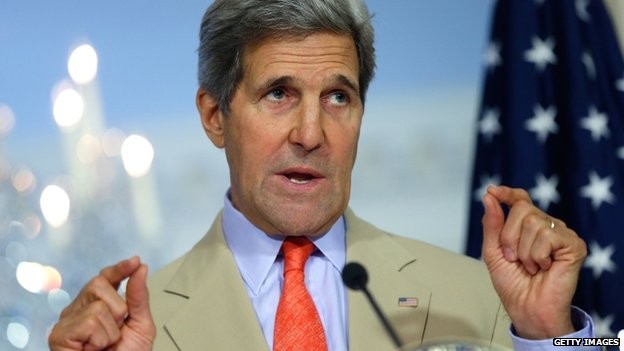(VOVworld)- US Secretary of State John Kerry is on his first official visit to India since India’s new Prime Minister was elected. On Thursday, John Kerry and his Indian counterpart Sushma Swaraj co-chaired the 5th US-Indian Strategic Dialogue on measures to reboot bilateral ties.

The US Secretary of State said boosting closer ties with India is one of the US’s long term strategic priorities (photo: bbc.com) |
Four years ago, US President Barak Obama said that the US-India relationship would possibly become a firm strategic partnership of the 21st century. However, many issues have remained obstructing the expected development of the two countries’ ties. During John Kerry’s visit, both countries hope to gain certain progresses in cooperation projects in national defence, pave the way for US groups to invest in nuclear energy and gain India’s commitments in interest sharing in Asia
Moving towards strategic interest
Prior to his visit, the US Secretary of State said boosting closer ties with India is one of the US’s long term strategic priorities. He said it is now time to tap in potential of the US-Indian partnership once both countries are determined to realize strategic and historic opportunities that they both will create. India has had a new government with new priorities and possibilities. John Kerry expressed his strong hope for Prime Minister Narendra Modi’s vision and development plans. Meanwhile, Samuel Locklear, Commander of the US Pacific Command said Washington wanted to strengthen military ties with New Delhi and hoped that New Delhi would play a more active role in South and Southeast Asia, where concerns over Beijing’s attitude over territorial disputes remain.
Two-way trade turnover between India and the US has reached about 100 billion USD and is expected to increase by 5 fold in the near future. The Indian government expects to attract more investment from the US. To this end, New Delhi has opened doors for foreign investment in insurance and national defence. India has uplifted Foreign Direct Investment’s cap in national defence equipment to 49% against the current 26%. With this decision, during their strategic dialogue, the two countries will discuss the co-production of javelin missiles and a program on drone development. India also wants to increase cooperation with the US in shale gas exploitation while the US wants to expand exports and investment in India.
Barriers remain
Though the two countries enjoy favourable conditions to come closer, bilateral ties have not witnessed spectacular developments. Newly-elected Indian Prime Minister Narendra Modi of the Bharatiya Janata Party used to be banned to enter the US following chaos in Gujarat state which killed more than 1,000 people, most of whom were Muslim. As soon as he took office, Narendra Modi signed an agreement to set up a development bank of the BRICS group which consists of China, Russia, India, Brazil and South Africa to get rid of control of international financial institutions, which are said to be cornered by the US and Europe. In addition, the two countries’ relationship is shadowed after Washington arrested Ms Deyani Khobradage, Indian Deputy General Consul in New York, last year due to allegations of visa frauds and labour exploitation of maids. Both countries also face differences over trade protection, intellectual property rights, ownership reforms in India’s national defence enterprises.
After John Kerry’s visit to India, US Defence Secretary Chuck Hagel will also visit India next month. New Indian Prime Minister Narendra Modi is scheduled to visit the US in September at the invitation of President Barak Obama. These moves reflect the two countries’ efforts to reboot bilateral ties.